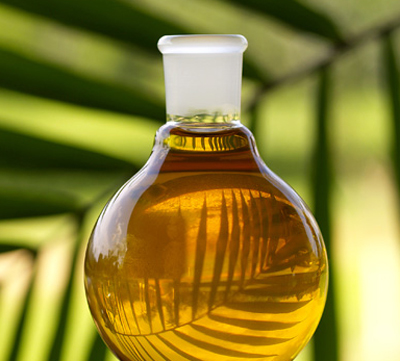Monday, 10 August 2015 11:27
 KUALA LUMPUR: Malaysian palm oil stocks rose to 2.27 million tonnes in July due to higher production and a slowdown in demand after the Muslim holy month of Ramadan, figures from an industry regulator showed on Monday.
KUALA LUMPUR: Malaysian palm oil stocks rose to 2.27 million tonnes in July due to higher production and a slowdown in demand after the Muslim holy month of Ramadan, figures from an industry regulator showed on Monday.
Malaysian palm oil futures ticked lower on the data, extending losses into a seventh week despite signs that shipments from the world’s second-largest producer increased this month.
The benchmark palm price dipped 0.3 percent to 2,036 ringgit ($ 519) a tonne, not far from a near one-year low of 2,006 ringgit touched last week due to slowing imports by top consumers China and India.
Benchmark prices have been falling since June despite a weaker ringgit, which slid past 3.9000 against the dollar last Thursday for the first time since the Asian financial crisis.
According to data from the Malaysian Palm Oil Board (MPOB), inventories in July rose 5.3 percent from a revised 2.15 million tonnes at the end of June, compared with a median forecast of 2.19 million tonnes in a Reuters poll. The six planters, traders and analysts surveyed had predicted a 1.6-percent rise in stockpiles.
“Despite the higher than expected inventory level, we are neutral on the news due to encouraging exports for the first 10 days of August,” said Alan Lim, an analyst at MIDF Amanah Investment Bank Berhad.
“We expect exports for August to increase by 5 percent month-on-month to 1.68 million metric tonnes. We think low prices currently at close to 2,000 ringgit per tonne should encourage demand.”
Malaysian exports fell 5.6 percent to 1.60 million tonnes in July, against the poll’s prediction of a 6.9-percent drop from June on weaker demand after Ramadan, when communal feasting after full days of fasting drives up edible oil consumption.
Data from cargo surveyor Intertek Testing Services on Monday showed however that Malaysian palm oil exports increased 57.6 percent over August 1-10 from the same period in July.
Production in June by the world’s second-largest palm producer rose 2.9 percent to 1.81 million tonnes, according to MPOB data. Lim expects Malaysia’s production to be flat this year at 19.7 million metric tonnes, and for CPO prices to bottom out at 2,000 ringgit.
“The dry season in Sabah from February to April is expected to cause low CPO production from Sabah in the fourth quarter of 2015,” he said. “Our price outlook is 2,000 to 2,250 per tonne for the rest of the year.”
Vegetable oil analyst Dorab Mistry last week forecast palm oil prices could fall as low as 1,900 ringgit ($ 484.08) a tonne by the end of September due to ample supply and poor demand.



























